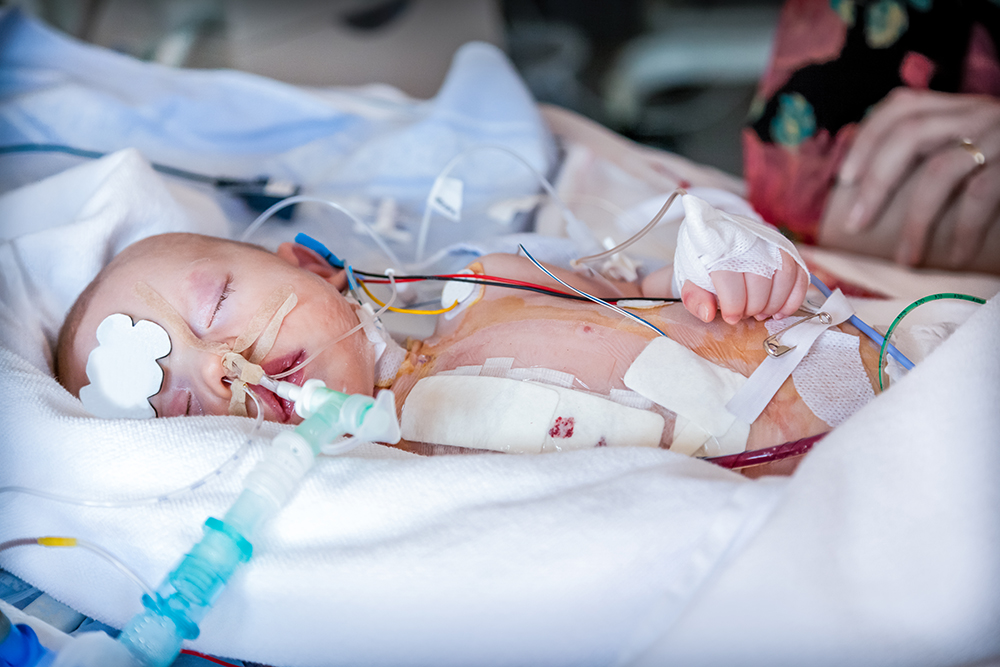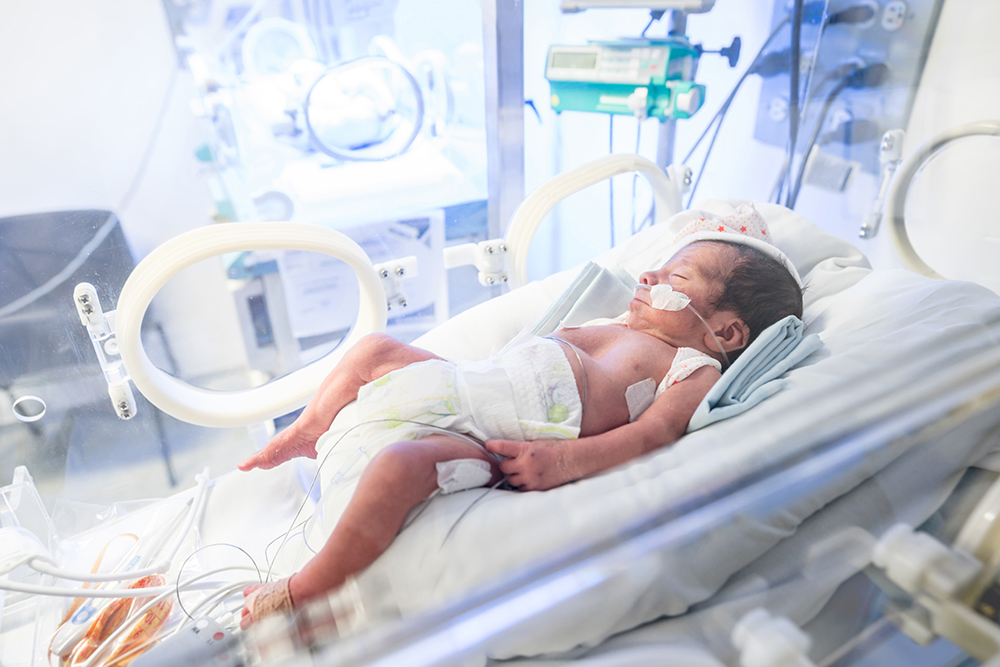
Bringing a child into the world is a life changing experience. Because of the hope invested by parents in their children, it is among the worst experiences imaginable when the unexpected happens and a baby’s brain is permanently injured during the birthing process. And the agony is compounded if the injury was preventable.
Cerebral palsy (CP), the most common motor disability in childhood, is a group of disorders that affects muscle tone, posture and/or movement due to abnormal brain development or damage to the developing brain.
About 85-90% of cases of cerebral palsy cases are congenital CP, which is related to brain damage that occurs before or during birth. A small percentage of CP cases are ”acquired CP,” meaning it was caused by brain damage (usually an infection, such as meningitis, or a head injury) that occurs in the first few months or years of life, while the brain is still developing.
Many people with cerebral palsy have additional symptoms that accompany the motor abnormalities, including intellectual disability, communication and behavior difficulties, seizure disorders, problems with vision, hearing, swallowing, and speaking, difficulty with precise movements, and musculoskeletal complications.
Unfortunately, many risks and adverse events can occur during the birthing process, both during the prenatal period and during the birth itself that can cause brain damage resulting in cerebral palsy. In some cases, the brain damage could have been prevented with the exercise of reasonable medical care.
There are a few different kinds of cerebral palsy that are classified based upon the type of movement disorder involved, which often correlates with which parts of the brain are affected.
The signs and symptoms of cerebral palsy can vary dramatically because there are many different types and levels of disability. For example, a child with severe CP might not be able to walk at all and require lifelong care, while another child with mild CP might walk only a little awkwardly and require no special assistance.
However, the most common symptoms are delays in reaching motor or movement milestones (like sitting, standing, or walking). Other early signs that children with CP may exhibit include:
The signs of cerebral palsy usually appear in the early months of life; however the diagnosis may be delayed until age two years or later. To diagnose cerebral palsy, it is important to monitor a child’s growth and development and perform a developmental screening if a parent is concerned about the child’s development. If doctors further suspect cerebral palsy, they will refer for developmental and medical evaluations to further work-up the condition.
The disorder itself is not progressive, however, the exact symptoms may change over time.
Abnormal development or damage to the fetal or infantile brain has several possible causes and is often multifactorial. Examples of possible causes include: history of prematurity, fetal growth restriction, multiple gestation, maternal infection or fever during pregnancy, lack of oxygen during the birth process, genetic abnormalities and congenital brain malformations.
There are several ways that cerebral palsy could be caused by the negligence of a health care provider. For example:
There are many additional ways cerebral palsy can occur due to medical malpractice, so it is best to have an experienced medical malpractice lawyer review your potential case.
There is no cure for cerebral palsy, and there is no single treatment that works for all children with CP, but there are many treatment options for parents to help improve the lives of their children with CP. Some of the most common types of treatment include:
Many of these therapies come at a high financial cost to the family of the injured child. Health insurance should cover most of the expenses, but out-of-pocket costs may be difficult for many families to afford.

Hypoxic-ischemic encephalopathy (HIE), also known as perinatal, intrapartum, or birth asphyxia, is a type of brain injury caused by partial or complete lack of oxygen to the brain that occurs during pregnancy, labor and delivery, or in the postnatal period. HIE is a broad term that encompasses many different diagnoses caused by oxygen deprivation to the brain.
Babies with HIE are at increased risk of death or long-term disabilities, including severe developmental, cognitive, and motor delays. In some cases, the brain injury could have been prevented or diminished with the exercise of reasonable medical care.
HIE is one of the major causes of neonatal encephalopathy (neurologic dysfunction) in a term infant. There are various clinical signs of HIE, although some are nonspecific and may not be caused by an acute hypoxic-ischemic event. Signs and symptoms that an infant with HIE might exhibit include:
The symptoms of HIE vary widely based on the length of time the brain was without oxygen, extent of brain damage, and areas of brain affected. There are three categories of HIE that are classified by severity of symptoms:
Infants with mild HIE are most likely to develop normally, while infants with moderate to severe HIE are more likely to suffer from severe and permanent neurologic disability or death.
In some newborn babies, signs and symptoms of HIE are not seen right away. Instead, parents and doctors may notice delayed development and neurological problems later in childhood.
Several causes and risk factors have been associated with HIE, including:
In many cases, the exact cause of HIE is unknown, however there are many problems during pregnancy and labor and delivery that can cause or increase the risk of asphyxia, such as:
There are many ways that hypoxic-ischemic encephalopathy could be caused by the negligence of a health care provider. For example:
There are many different ways HIE can occur due to medical malpractice, so it is best to have an experienced medical malpractice lawyer review your potential case.
Doctors may suspect HIE for various reasons such as, if a significant event that is known risk factor for HIE occurs during labor and delivery, or if the infant displays symptoms of HIE after delivery. Initial treatment may include immediate resuscitation, stabilization, and supportive care measures. Once the infant is stabilized, the doctors will perform neuroimaging tests, such as a brain MRI, to check for abnormalities consistent with hypoxia-ischemia and to predict long-term outcomes. Additional tests that may be done include an electroencephalogram (EEG) to monitor for seizures and signs of brain dysfunction, and checking blood gas levels.
In infants with moderate to severe HIE, therapeutic hypothermia is indicated within the first six hours after delivery. Studies have shown that this treatment that involves cooling the baby for three days can result in lower likelihood of death and decreased injury to the brain in these infants.
The infant may also benefit from transferring to a higher-level infant care facility equipped to diagnose and care for babies with HIE. For example, if hypothermia is not available at the birth center, infants who meet the criteria for therapeutic hypothermia should be transferred immediately to an experienced enter where hypothermia treatment is available so that the treatment can be initiated within the first 6 hours of delivery.
Supportive care measures are used consistently before, during and after therapeutic hypothermia and for infants that do not receive cooling treatment, to prevent additional injury. These support measures include: ventilation and breathing support, maintenance of blood pressure, maintenance of metabolic status, such as appropriate blood sugar and pH levels, and control and monitoring of seizures and brain edema.
Depending on the severity of the brain damage, the recovery from HIE can vary, ranging from little to no long-term health issues to life-long problems including:
The severity of impairment is usually not determined until the child is a few years old.
Long-term treatment options are variable depending on the special needs of the baby and can include extensive monitoring from a pediatric team of doctors, neurodevelopmental support, and many other options.
Washington law requires that most medical malpractice lawsuits be filed within three years of the date of alleged negligence. Exceptions do apply, so that time limit may be longer or shorter, depending on the specific circumstance of each case. It is best to not wait until most of this time has passed; if you suspect medical malpractice, get in touch with us.

A skull fracture is one of the birth injuries an infant can suffer during labor and delivery. In many cases, a skull fracture will resolve spontaneously, however, in some cases, it can have devastating consequences including severe brain damage or even death. In some cases, the injury could have been avoided or the outcome improved with the exercise of reasonable care.
The bones of a newborn baby’s skull are very soft and flexible, with spaces between the bony plates of the skull (“cranial sutures”) to allow passage through the birth canal. Although rare, skull fractures can occur during labor and delivery by various causes including, pressure on the fetal skull in the birth canal from maternal structures, use of vacuum extractors or forceps during delivery, or accidental fall after delivery.
There are different types of skull fracture patterns that can result from birth trauma, including:
Sometimes doctors will immediately suspect that a bone has been fractured during labor and delivery. Other times, a skull fracture may be clinically silent and therefore not discovered unless specifically looked for.
Symptoms of a skull fracture vary greatly based on the site and severity of the skull fracture, ranging from none to mild to severe. Symptoms include swelling and bruising, and neurological signs such as vomiting, seizures, lethargy and hypotonia.
In order to evaluate a suspected infant skull fracture, imaging studies, such as, an x-ray or CT scan will be obtained to look for fractures and associated intracranial processes, such as hemorrhages. Repeat imaging may be needed to monitor for changes, such as expansion of the hematoma that can cause a mass effect on the brain.
Although some skull fractures can heal without any long-term consequences, in some cases failure to treat a fracture can lead to much more serious consequences, including:
There are many different ways that a skull fracture of a baby could be caused by the negligence of a health care provider. For example:
In addition to potential negligence in causing an infant skull fracture, health care providers may fail to exercise reasonable care in recognizing and treating a skull fracture, which could cause severe injuries that otherwise could have been prevented or minimized. For example, if a doctor has reason to suspect an infant skull fracture, imaging should be obtained to assess the fracture and any possible associated intracranial process, such as a hemorrhage. A neurosurgical consultation should be obtained if indicated, such as, for surgical evacuation of a blood clot or surgical repair of the skull fracture to relieve pressure on the brain and minimize or prevent a permanent brain injury.
There are many different ways a skull fracture can occur due to medical malpractice, so it is best to have our experienced medical malpractice lawyers review your potential case.


